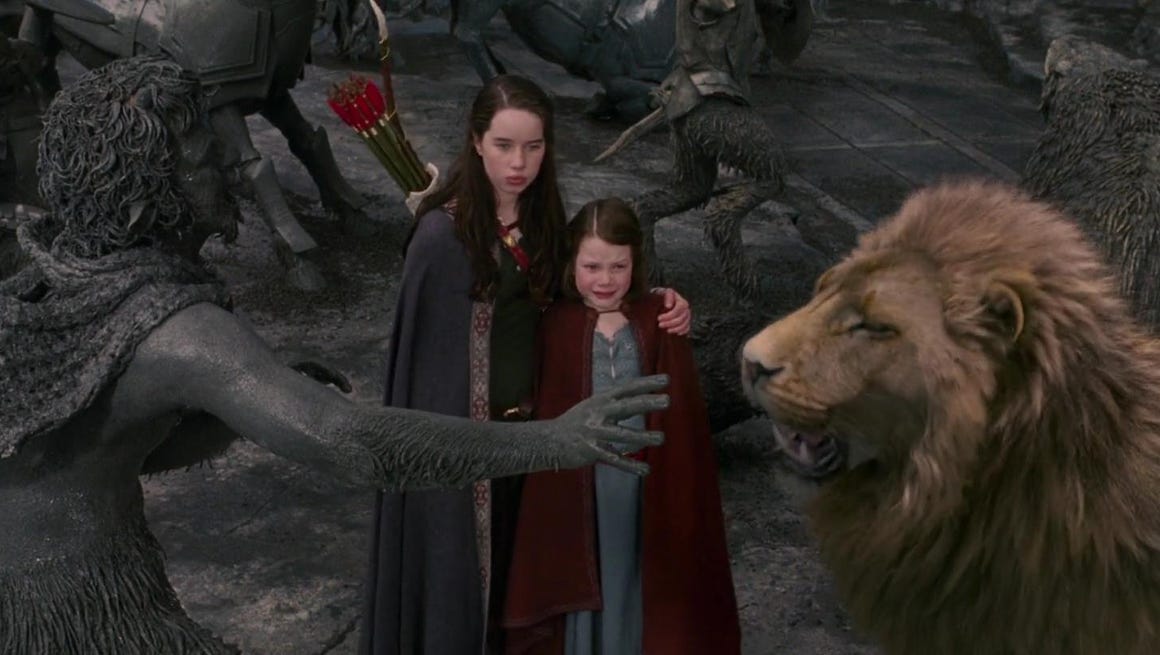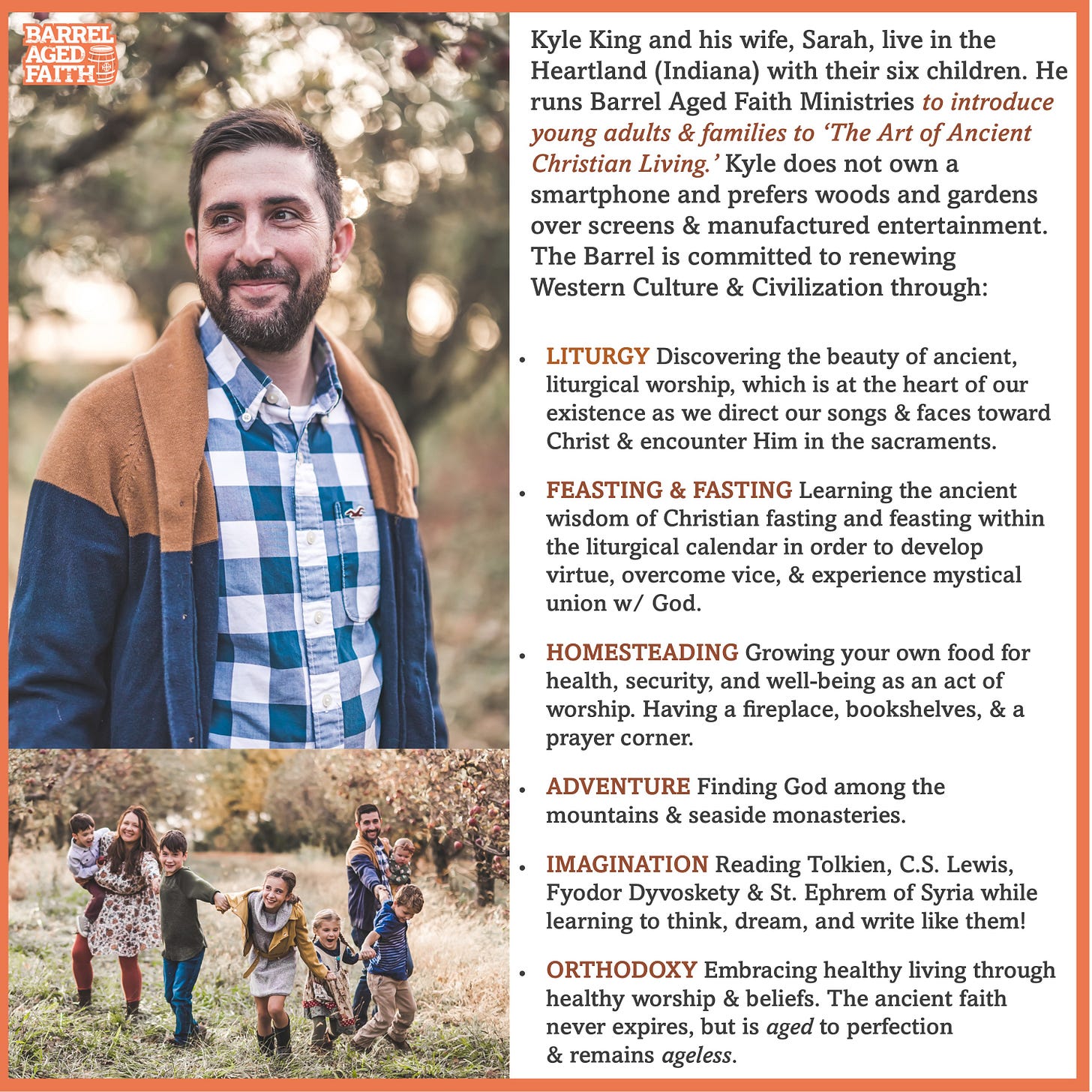C.S. Lewis on the Harrowing of Hell
Discovering Christ's Descent Into Hades in Scripture, the Fathers, & Narnia 🦁
Dear Barrel Aged Christians,
🎥 I recently posted a video on the often neglected topic of Christ’s descent to Hades on Holy Saturday or the time period between His death and glorious Resurrection. Check it out above!
📖Read more about what the Bible and the Church fathers say about the doctrine here.
🦁 Read more about C.S. Lewis’ understanding of this historic doctrine and references to it in his books, letters, and Narnia below! 👇
This is what C.S. Lewis has to say explicitly about the topic. In a letter written to Mrs. Sutherford (April 28, 1960), he writes:
“I believe in something like this… The medieval authors delighted to picture what they called ‘the harrowing of hell’, Christ descending and knocking on those eternal doors and bringing out those who He chose…. That would explain how what Christ did can save those who lived long before the Incarnation.”
Lewis explains that Christ was the One who first opened the glorious gates of Heaven for those saints who were delayed in Hades (or Sheol). He writes,
“The New Testament always speaks of Christ not as one who taught, or demonstrated, the possibility of a glorious after life but as one who first created the possibility – the Pioneer, the First Fruits, the Man who forced the door.”
Lewis demonstrates this theme throughout his fiction. Here are some examples:
In ‘The Lion, Witch, and the Wardrobe,’ Aslan invades the White Witch’s castle (hades, the realm of death) and breathes on the frozen Narnians in her courtyard. These characters, like Mr. Tumnus, represent the saints in Sheol/Hades (also called the ‘Limbo of the Fathers’), because they were the ones who fought against the White Witch. They were frozen, asleep, and in a dead like state when Aslan came to break the enchantment and finally give them their reward. He takes them Home to be with Him where the curse of eternal winter is finally broken. Of course, the timing is not identical to the Gospels. Christ’s descent into Hades is before His resurrection whereas Aslan descent to the White Witch’s lair occurs after his resurrection.
In ‘The Silver Chair,’ the children descend into Underland in order to set the son of King Caspian, Prince Rilian, free from the Green Lady’s enchantment. Dr. Benita Huffman Muth makes these key observations: “The Silver Chair’s Underland echoes the classical Underworld: “dark, underground, and encompassing immense space.”… Eustace, Jill, and Puddleglum meet a hundred “dreadfully pale” (123) Earthmen, who despite various forms were “in one respect [. . .] all alike: every face in the whole hundred was as sad as a face could be” (123)… This mission is threatened by exterior perils --
capture, imprisonment, and enchantment – and even more jeopardizing self sabotage -- their voluntary capitulation to the Lady’s drugging insistence that there is no Sun, no Overland, no Aslan… Puddleglum does not give up, crushing the drugged fire and holding his faith in Narnia and Aslan. Nor has Rilian become a passive prisoner… Instead he participates in his own rescue by destroying the chair and killing the Lady. Thus, their success confirms the power of ordinary people who voluntarily follow Aslan’s guidance and their own consciences… At the book’s end, this hell is harrowed by Eustace, Jill, Caspian, and Aslan.”1
In regards to other Narnian places where characters are freed from Hellish places, Dr. Benita Huffman Muth also notes, “Likewise, other imprisoning places in the Chronicles of Narnia initially seem Hellish, yet prove escapable. In The Voyage of the Dawn Treader, Rhoop spends years on an island tormented, not due to a deity’s punishing justice, but due to his own choice to come and his own dreams. The stable into which Jill, Eustace, and Tirian are thrown in The Last Battle actually leads them to Aslan’s county. The dwarfs find it a prison because they choose. Like these places, Underland could become hell but only incidentally, if characters chose to make them so. This fact highlights the ideal that the combination of Christ’s sacrifice and human free will means a soul’s residence is not inevitable and largely subject to choice. This self-imposed mental prison is the real Hell for Lewis; as he writes in a 1946 letter to Arthur Greaves (13 May), the hell which exists in the mind “is actual enough” (508).
In Lewis’ imagination, Hell is not some great, magnificent kingdom under the world, but rather, it is a small, weak, crumbling, and dark realm that is divided amongst itself. In his novel, The Great Divorce, Lewis has his fictional George MacDonald say, “Only the Greatest of all can make Himself small enough to enter Hell.” In other words, Christ did not need to become more powerful to enter Hell and defeat it, but rather, he only needed to become like one of us, weak and small. Rejected, tortured, and executed by his own kinsmen, He entered that realm of death in His ‘weakest state’ if you will. But even in that lowly place, His simple gaze was enough to make the whole place tremble and set captives free!
Let us conclude with a wonderful quote by C.S. Lewis in his book Miracles,
“On the one hand Death is the triumph of Satan, the punishment of the fall, and the last enemy. Christ shed tears at the grave of Lazarus and sweated blood in Gethsemane: the Life of Lives that was in Him detested this penal obscenity not less than we do, but more. On the other hand, only he who loses his life will save it. We are baptized into the death of Christ, and it is the remedy for the fall. Death is, in fact, what some modern people call 'ambivalent'. It is Satan's great weapon and also God's great weapon: it is holy and unholy; our supreme disgrace and our only hope; the thing Christ came to conquer and the means by which He conquered.”
Read full journal article here: https://pillars.taylor.edu/cgi/viewcontent.cgi?article=1216&context=inklings_forever "Muth, Benita Huffman (2012) "'Few Return to the Sunlit Lands': Lewis's Classical Underworld in The Silver Chair," Inklings Forever: Published Colloquium Proceedings 1997-2016: Vol. 8, Article 17.



